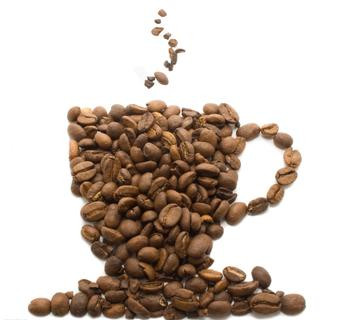Baking vocabulary related to "processor" for roasting coffee beans

The words mentioned in this section are all flavor words related to the post-harvest processing procedures (shelling, fermentation, washing, drying and storage), most of which are defective flavors.
Clean: this common word stands for "coffee beans come directly from the fruit in the cup and are not contaminated with any defective flavor in the process". The best performers in Central American coffee beans, Kenyan coffee beans, Isabia washed coffee beans, and Hawaii-Kona coffee beans are all the best examples. These coffee beans have a clear special flavor, the special flavor performance is bright and clear, without any defective flavor interference caused by treatment procedures, drying procedures and so on. Sumatra-Mantenin coffee beans and Sulawesi coffee beans are just the opposite, and their unique irony (low-key complex flavors such as malt and mildew) comes partly from traditional rough handling.
Fruit flavor / overfermentation flavor / wine flavor (Fruity/Fermented/Winey): some coffee beans are inherently fruity, but this flavor is usually due to the fact that during the drying process, the peel and pulp of the shell bean are not removed, and the Tang fen in it begins to ferment, and the flavor of fermentation is attached to the coffee bean. Or with shell beans can keep part of the pulp, mucous membrane fermentation together, will also produce this effect. If this process is handled properly and there are no micro-bacteria, then the flavor will be sweet and charming, and this flavor is called "fruit flavor"; but if handled properly, the flavor may have the smell of food spoilage. this flavor is called "overfermentation flavor", that is, the defect in the flavor; in between, there is a critical fermentation flavor, that is, "wine flavor". Some people love coffee beans with fruit flavor and wine flavor very much, and the author is also one of the enthusiasts.
Musty / malt (Musty/Malty): when coffee beans adhere to microbial organisms during drying, they produce a very strong, hollow taste reminiscent of a piece of moldy leather in a wet shoe cabinet. However, when the taste is not fully developed to be too strong, the feeling expressed in the coffee flavor is acceptable, but the flavor is the "malt flavor" that many people will like. some very imaginative people even associate this pleasant taste with "chocolate flavor" romantically. However, the addition of this flavor is really too strong to accept, then this flavor can be directly called "musty flavor", which is a very obvious flavor defect.
Wet soil flavor (Earthy): this flavor is produced when the coffee fruit falls on the soil and absorbs the smell of the soil, which is often misunderstood as "mildew". Some professionals in the coffee industry think the soil smell is a charming exotic flavor, but others hate it so much that they regard it as a flavor defect.
Wild flavor (Wild): this word represents the wild flavor produced when a coffee bean has both of the aforementioned flavors.
Flavor defects related to storage conditions: sack flavor / taste decay (Baggy/Faded): soft coffee beans growing at lower elevations tend to produce a musty taste with a hollow taste, accompanied by a taste similar to the taste on the surface of a rope or sack, which coffee professionals call "sack flavor". The flavor of coffee beans with sack flavor is usually in a state of decline, tasteless and the outline of various flavors is blurred, which is usually regarded as a flavor defect.
Important Notice :
前街咖啡 FrontStreet Coffee has moved to new addredd:
FrontStreet Coffee Address: 315,Donghua East Road,GuangZhou
Tel:020 38364473
- Prev

General knowledge of coffee roasting the origin of roasting patterns
At present, the naming method mainly comes from two sources: one is the general preference of national drinkers' baking mode: Ruyi baking, French baking and so on. One is the naming rules developed by coffee professionals in the United States from the end of the 19th century to the beginning of the 20th century. The origin of these two names is still vague to some extent, so now there is a more objective way to assist in interpretation.
- Next

Common sense of roasting coffee beans words related to "roasting"
The words in this part are all related to the baking pattern or baking depth. Sweet: between medium and deep baking and ordinary deep baking (also seen as Viennese baking to Espresso baking), the complete development of sugar, coupled with the removal of some bitter flavor elements at this time, creates a round, soft, and sticky cup.
Related
- What is the meaning of lactic acid fermentation with coffee bean treatment?
- How to judge the state of foam by sound?
- How does the latte pull out the unicorn pattern? Come to get for a little trick to improve the flower pull!
- Will flower pulling affect the taste of the latte?
- Do you know the history of coffee?
- The difference between honey treatment and sun washing what is raisin honey treatment?
- What kind of milk can a novice use to make coffee foam to keep the foam longer? The correct method and skills of milking tutorial sharing
- Why do washed coffee beans taste sour? Flavor characteristics of washed Coffee
- Introduction to the skill of how to practice the size and height of water injection around the circle of hand-brewed coffee
- How do beginners practice coffee flower drawing from scratch?

